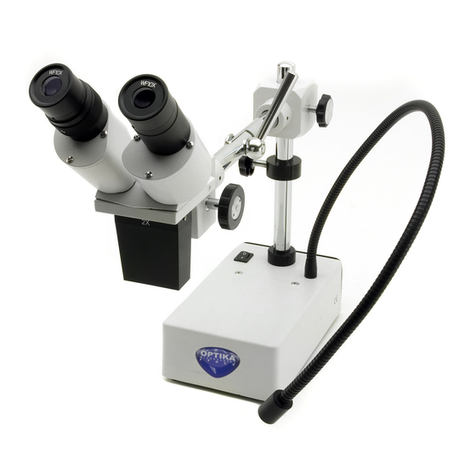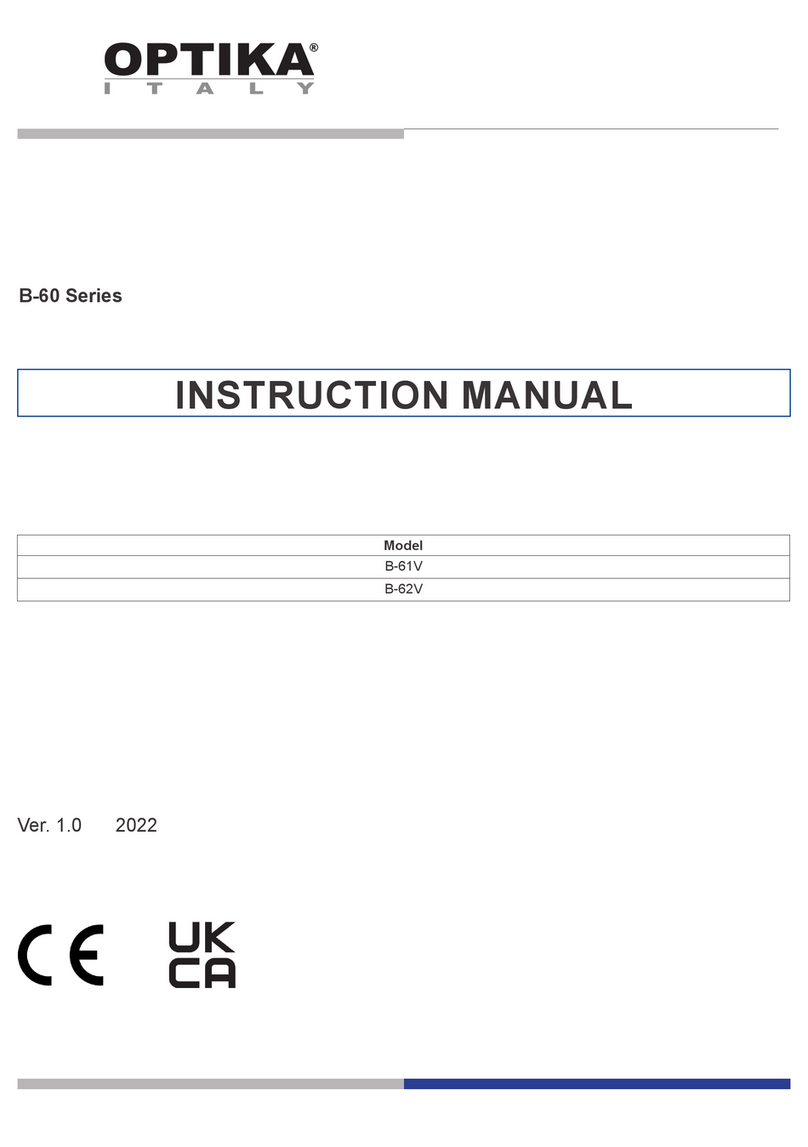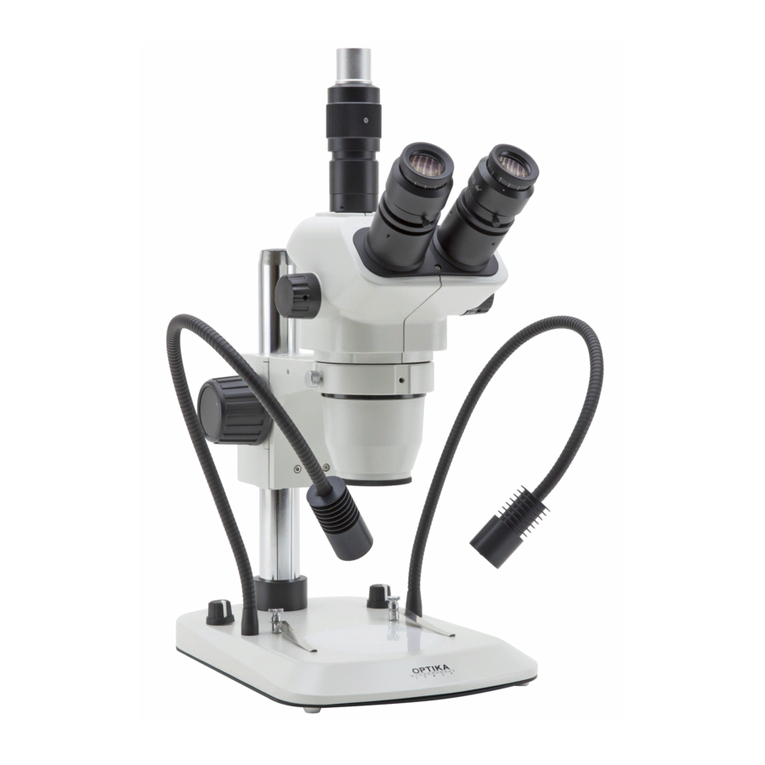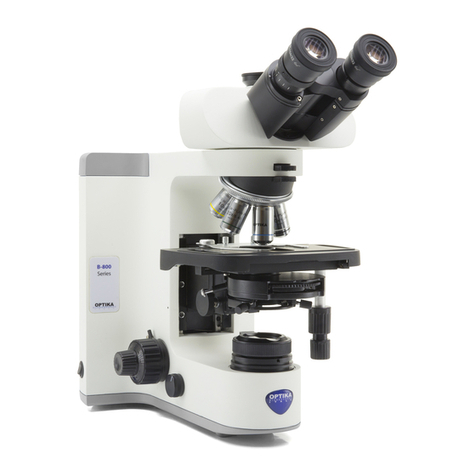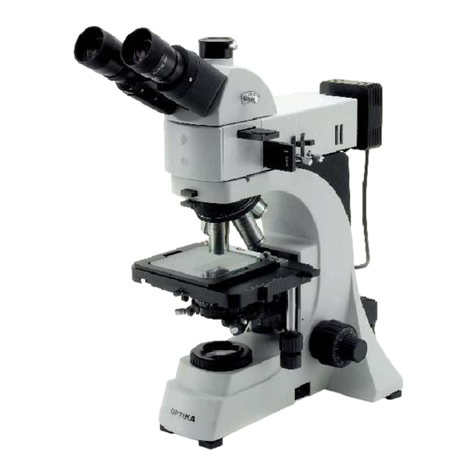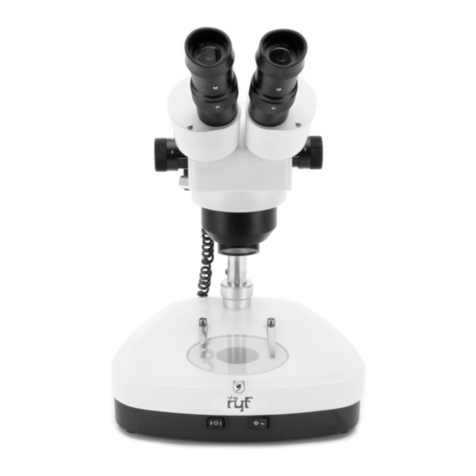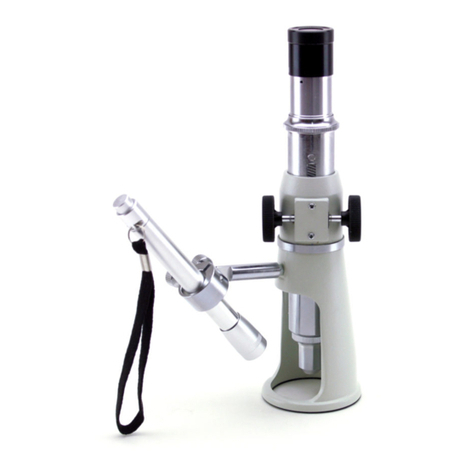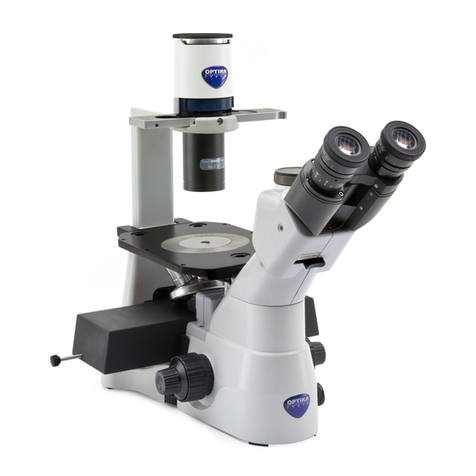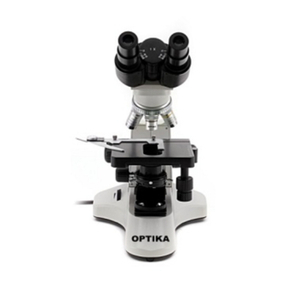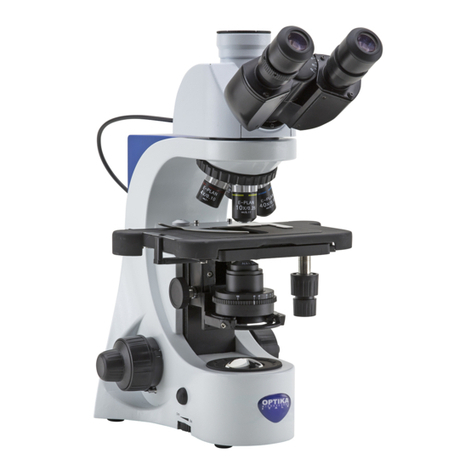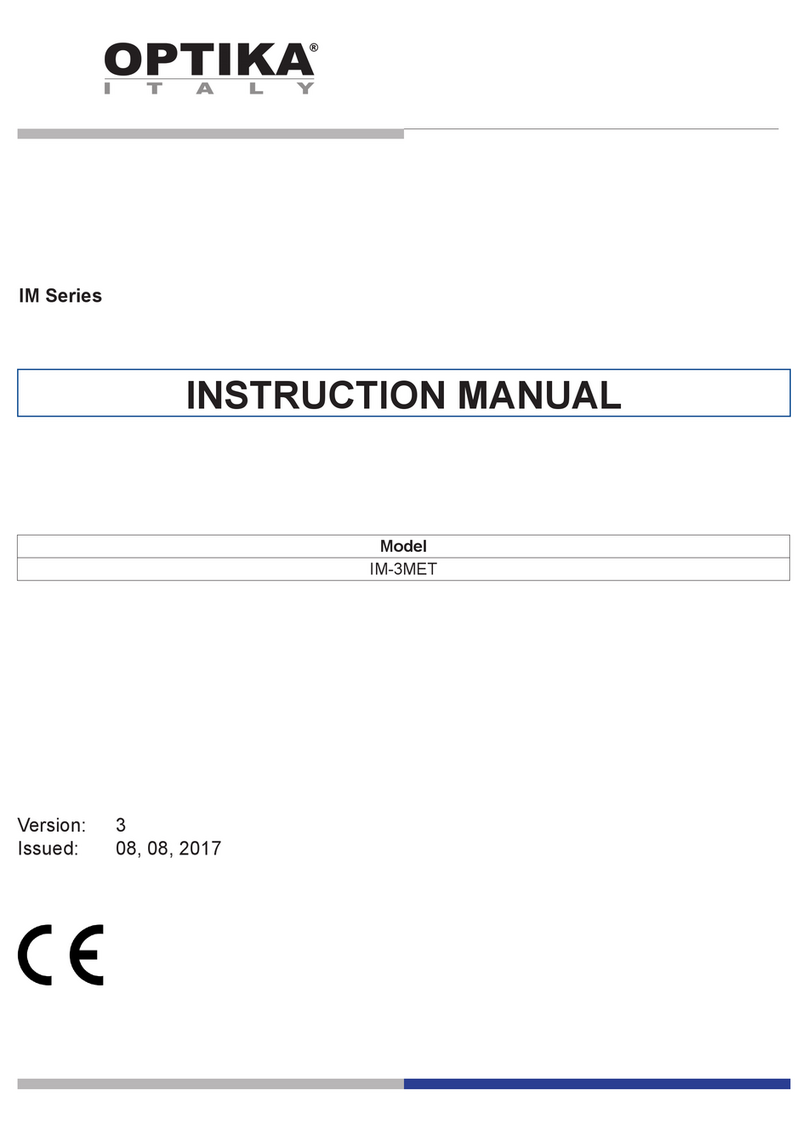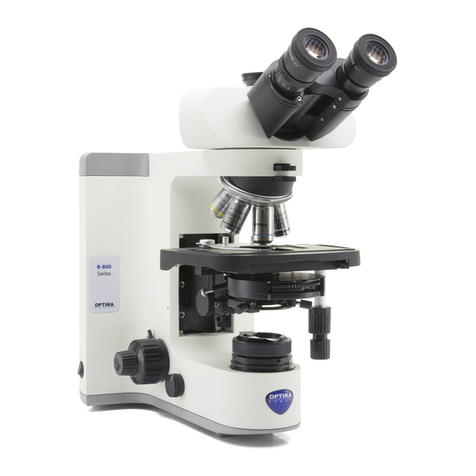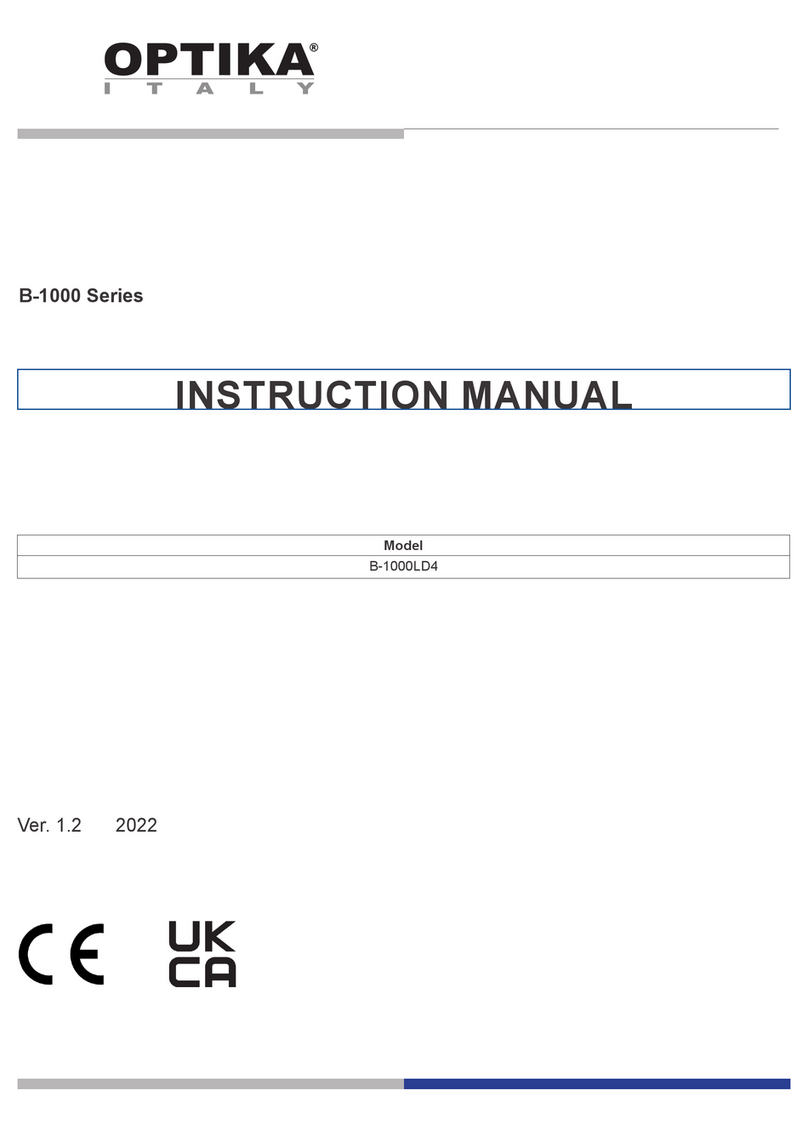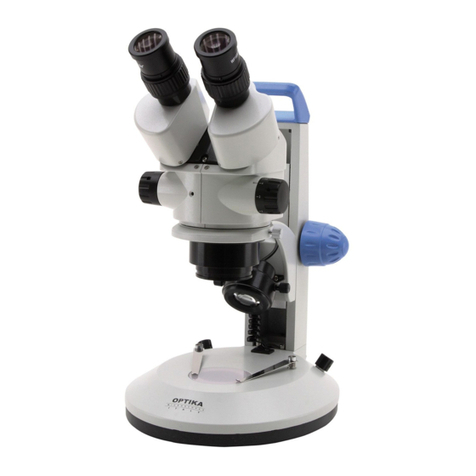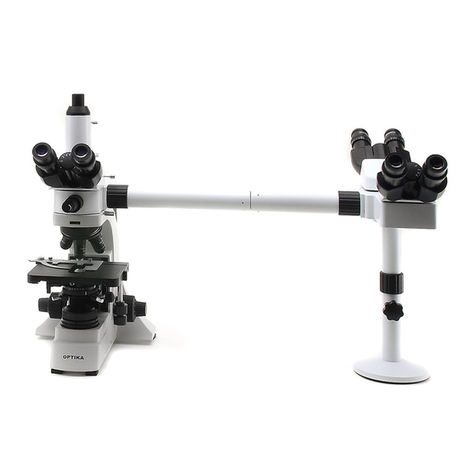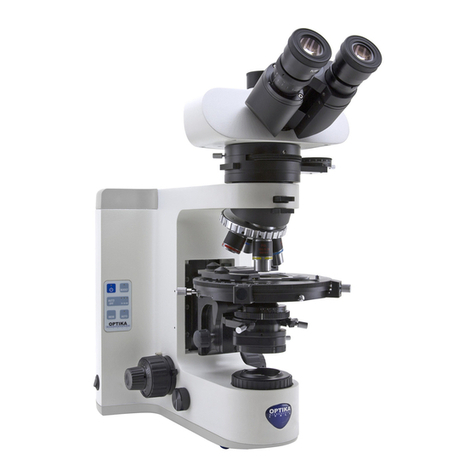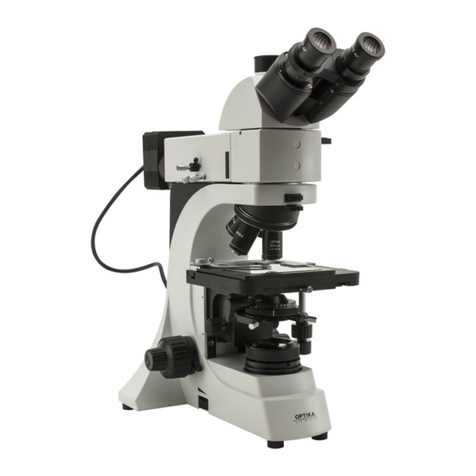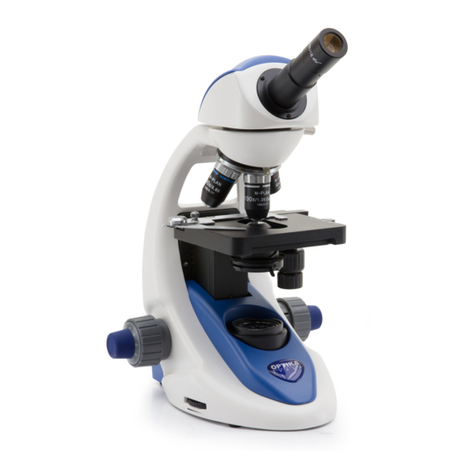Page 10
Ce microscope est un appareil scientifique de précision pensé pour durer de nombreuses années avec un en-
tretient minimum. Pour son élaboration il a été utilisé des éléments optiques et mécaniques de grande qui le
convertisse en un appareil idéal pour une utilisation journalière dans les salles de classes et les laboratoires.
Optika informe que ce manuel contient d’importantes informations concernant la sécurité et l’entretient de ce
produit et par conséquent il doit être accessible à toutes personnes susceptibles d’utiliser cet appareil.
Optika décline toute responsabilité dérivant d’une utilisation inappropriée de cet appareil non contemplée
dans ce mode d’emploi.
Sécurité
Ce manuel contient d’importantes infomations concernant les normes de sécurité à suivre durant
l’installaton, ainsi que sur l’utilisation et l’entretien du microscope. Si raccomanda di leggere attenta-
mente il manuale prima di qualsiasi utilizzo dello strumento. Il est donc important de lire ce manuel et
de suivre les normes de sécurité.
Les produits OPTIKA peuvent être utilisés en toute sécurité dans des conditions de travail normales.
L’instrument et les accéssoires décrits dans ce manuel ont été realisés et testés selon des standard
industriels de sécurité pour l’instrumentation scientifique.
Une utilisation inapropriée risquerait de provoquer des blessures à l’utilisateur et au microscope.
Garder ce manuel à portée de main durnat l’utilisation du microscope.
Précautions de sécurité électrique
Avant de brancher le cable d’alimentation à la prise, s’assurer que la tension dans votre région corre-
sponde à la tension de l’instrument et que l’interrupteur de l’éclairage soit éteint.
L’utilisateur se doit de suivre les normes de sécurité de son propre pays.
L’instrument a un marquage de sécurité CE, l’utilisateur est responsable de l’utilisation appropriée de
l’instrument.
Symboles d’avertissement / risque utilisés dans le manuel
Avant d’utiliser l’instrument, l’utilisateur doit connaitre toutes les précautions liées à la sécurité.
Les symboles d’avertissement ou de danger sont indiqués ci-dessous.
Suivez les instructions marquées de ce symbole afin d’éviter d’éventuelles bles-
sures.
Avvertissement concernant l’utilisation; l’utilisation inapproprièe du microscope
riquerait de provoquer des blessures à l’utilisateur et d’abimer l’instrument.
Risque de choc életrique.
Attention: surfaces à haute température. Eviter le contact direct.
Notes techniques et conseils pour l’utilisation.
PRÉCAUTIONS DE SÉCURITÉ
